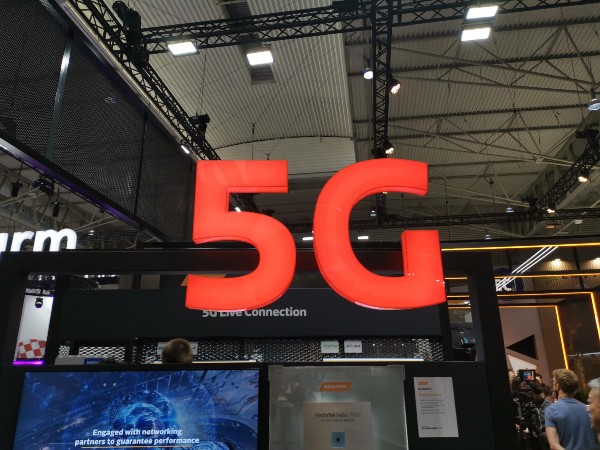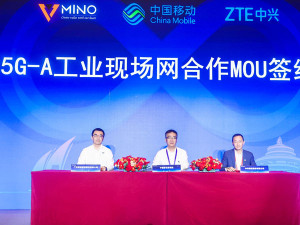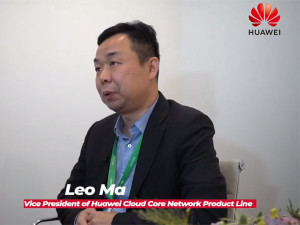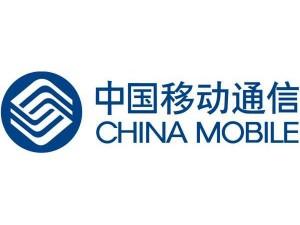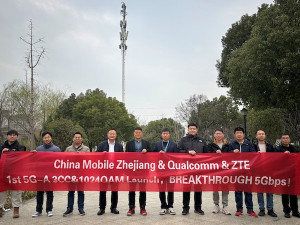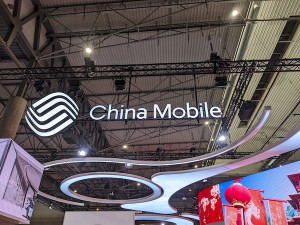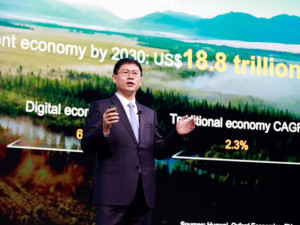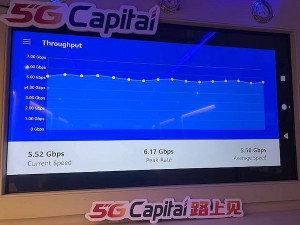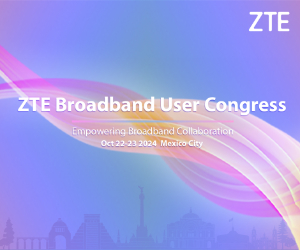Last year, China Mobile Research Institute, Huawei and industry partners released a White Paper exploring the development of 5G-Advanced technology. At Mobile World Congress 2022, we caught up with the institute's Vice President Duan Xiaodong to discuss the newest version detailing how the technology is evolving.
1) What’s new in Version 2.0 of the White Paper compared to Version 1.0, which was released last year?
In August 2021, we released the white paper 5G-Advanced Technology Evolution from a Network Perspective – Towards a New Era of Intelligent Connect X (1.0) with 21 industry partners. The paper describes the development concepts and key technologies of 5G-Advanced network technologies from three aspects: "convergence", "enablement", and "artificial intelligence". This is the first industry’s white paper that analyzes and describes 5G-Advanced network architecture evolution and technology development. Written together by 26 partners from different industries, it reflects the technical viewpoints of all parties in the industry and provides a reference for 5G-Advanced network technology development, so it is of interest to a wide audience. As standards progress, 3GPP started research on the R18 system architecture and key technologies in December last year, and started discussion on R19 requirements in SA1 (requirement team). We can see that more and more new technologies are emerging in the 5G-Advanced phase. Therefore, we thought it was necessary to update the white paper version 1.0 to describe the new scenarios and technical requirements.
The white paper V2.0 provides enhancements in the following four aspects:
- XR multimedia enhancement: implements finer-granularity QoS guarantee design based on media stream characteristics.
- Mobile computing network: enhance 5G network perception of computing power, implement collaboration between 5G core network and edge computing, provide optimal paths and experience for users and services, and form integrated computing and network services.
- Network support for AI/ML services: 5G-Advanced network enhancement provides good pipe capabilities, on-demand information openness, and high-quality information sharing capabilities for AI/ML services.
- Passive IoT: uses technologies such as simplified networks, simplified protocols, and lightweight security authentication to meet low-cost and ultra-large-scale access requirements for passive terminals.
2) In the 5G-A era, which technology directions are preferred by China Mobile, and how will the operator promote this technology?
R18 marks the beginning of 5G-Advanced (5G-A) and is the transition from 5G to 6G. At the 94th plenary meeting of 3GPP ended in December last year, China Mobile took the lead in seven projects at the R18 access network and system architecture level:
- The 5G XR and enhanced multimedia projects attracted much attention and won the support of 82 companies, ranking first in the project initiation voting.
- Network big data analysis is enhanced to support large-scale distributed intelligent architecture.
- Next-generation real-time communication services, creating brand-new voice services;
- UPF openness and service-oriented, enabling flexible and open new capabilities for private networks.
- Duplex evolution, reducing air interface delay in uplink and downlink duplex transmission;
- The convergence of wireless and AI technologies enables wireless networks to enter the intelligent era.
- Automatic collection and application of wireless data accelerates L4 autonomous driving network.
When R18 starts to standardize, we will begin discussing the requirements of R19. In the R19 phase, China Mobile will focus on mobile computing networks, network greenness and energy saving, and network awareness.
In SA1, China Mobile put forward the concept and service requirements of mobile computing first networks for the first time. It will study the key technologies of computing first network, including computing capability concept, routing protocol, and measurement technology.
Computing-first networks are considered as a key technology for the deep integration of computing and network. The technology has good prospects within the industry, and will also bring innovative changes to next generation networks. We hope we can work with industry partners to promote the development of new 5G-Advanced technologies, including computing-first networks.
The 5G-Advanced era has arrived. China Mobile will work with the industry partners to carry out in-depth cooperation to promote 5G-Advanced network technology research and create a sustainable future. Here, I propose three suggestions: first, focus on key business scenarios, make joint efforts to make breakthroughs and innovations, jointly promote 5G-Advanced development, and maintain network advancement. Second, grasp the pace and guide 5G-Advanced standards in an orderly manner to promote the convergence and unification of standards. Third, we should accelerate the transformation of technologies and industries, jointly shorten the time window for technology-to-industry transformation, and jointly build a 5G-Advanced industry ecosystem.
3) Enterprises and organizations at home and abroad are deploying 6G research. How does China Mobile view the development of 6G technology and what is the relationship between 6G technology and 5G-Advanced technology?
5G-Advanced is the evolution of 5G. We observed that with the continuous development of 5G-Advanced, some technologies that are considered to be in the 6G era have emerged in 5G-Advanced, such as mobile computing-first network, space-air-ground integrated network, digital twin, and metaverse. The development of each generation of mobile communications technologies is an iterative process. 5G-Advanced will lay a technical foundation for the research and implementation of key 6G technologies.
China Mobile attaches great importance to the deployment of 6G technologies. China Mobile is actively carrying out research on 6G network technologies while carrying out research on 5G-Advanced. Up to now, we have released multiple white papers and articles:
- In November 2020, we released three white papers: Vision 2030+ Network Architecture, Vision 2030+ Requirements, and Technology Trends 2030+ White Paper.
- In April 2021, China Mobile took the lead in releasing the 6G Drivers and Vision white paper in NGMN, which introduces the driving force, vision, and technical features of 6G network evolution.
- On June 6, 2021, in the IMT-2030 (6G) Promotion Team, China Mobile took the lead in releasing the White Paper "Overall Vision and Potential Key Technologies of 6G", in which we propose key technologies such as distributed architecture, endogenous intelligence, and computing power-aware networks as candidates for 6G networks, and launched the DOICT Converged 6G Network Architecture development initiative.
4) Many emerging markets have still not seen widespread 5G deployments - is it relevant to talk about 5G-Advanced in these regions if there is limited 5G availability?
With mobile telecommunications, it’s characteristic to build the next generation while using the current generation, and research the newer generation while building the next generation. Technology research is always about 5-10 years ahead of commercial deployment. As 5G has been put into commercial use, it has become a consensus in the industry to discuss new capabilities of 5G-Advanced networks.
With complete 5G basic capabilities, how to better serve the 2B industry has become a typical driving force for 5G-Advanced development. As 5G networks continue to proliferate within the industry, some new network requirements, such as deterministic communications, space-aviation-land integration, and multi-band coordination, are emerging. Operators can flexibly select these network capabilities and deploy them on demand, scenario-based, and selective basis. Therefore, the research and standardization of 5G-A can provide more and richer capabilities for 5G and further promote the development and deployment of 5G networks. Only with more advantageous network capabilities can the goal of 5G services be truly achieved.
5) The white paper outlines the use cases for 5G-Advanced – In your opinion, which technologies can create the highest value for the market?
5G-Advanced networks can simultaneously serve ‘To B’ and ‘To C’ subscribers. In terms of the ‘To C’ industry, there is no doubt that the industry is developing best and can bring higher value. I think the most valuable technology is the XR and Multimedia Enhancement Project (XRM).
In recent years, long videos, short videos, and live broadcasts attract huge traffic and bring a new development opportunity, and although the value per bit of an operator decreases, the total ARPU increases. As a traditional mobile communication operator, China Mobile also actively participates in it. During 5G construction, we perform large-scale tests and determine appropriate QoS levels to ensure user experience.
For 5G-Advanced, China Mobile took the lead in initiating the XR and enhanced multimedia project in 3GPP R18. The objective is to provide finer-grained and more customized QoS guarantee for media data by analyzing media stream service characteristics, such as frame structure and endpoint codec characteristics, to continuously improve the bearer capability of media streaming services.
In terms of the ‘To B’ industry, the development of 5G networks is highly expected. Due to extensive industry requirements and diverse service scenarios, the ‘To B’ market is a gradual development market for 5G networks, which requires continuous improvement of industry requirements and network capabilities. In recent years, 5G networks have made new progress in serving industries such as industrial manufacturing, energy, ports, and coal. For example, in the coal industry, 5G networks bring technologies such as high bandwidth, low latency, positioning, unmanned remote control of mining, loading, transportation, and monitoring. This improves production safety and production efficiency. We believe that new network technologies in the 5G-Advanced phase will bring new and higher industry value to the ‘To B’ industry.




